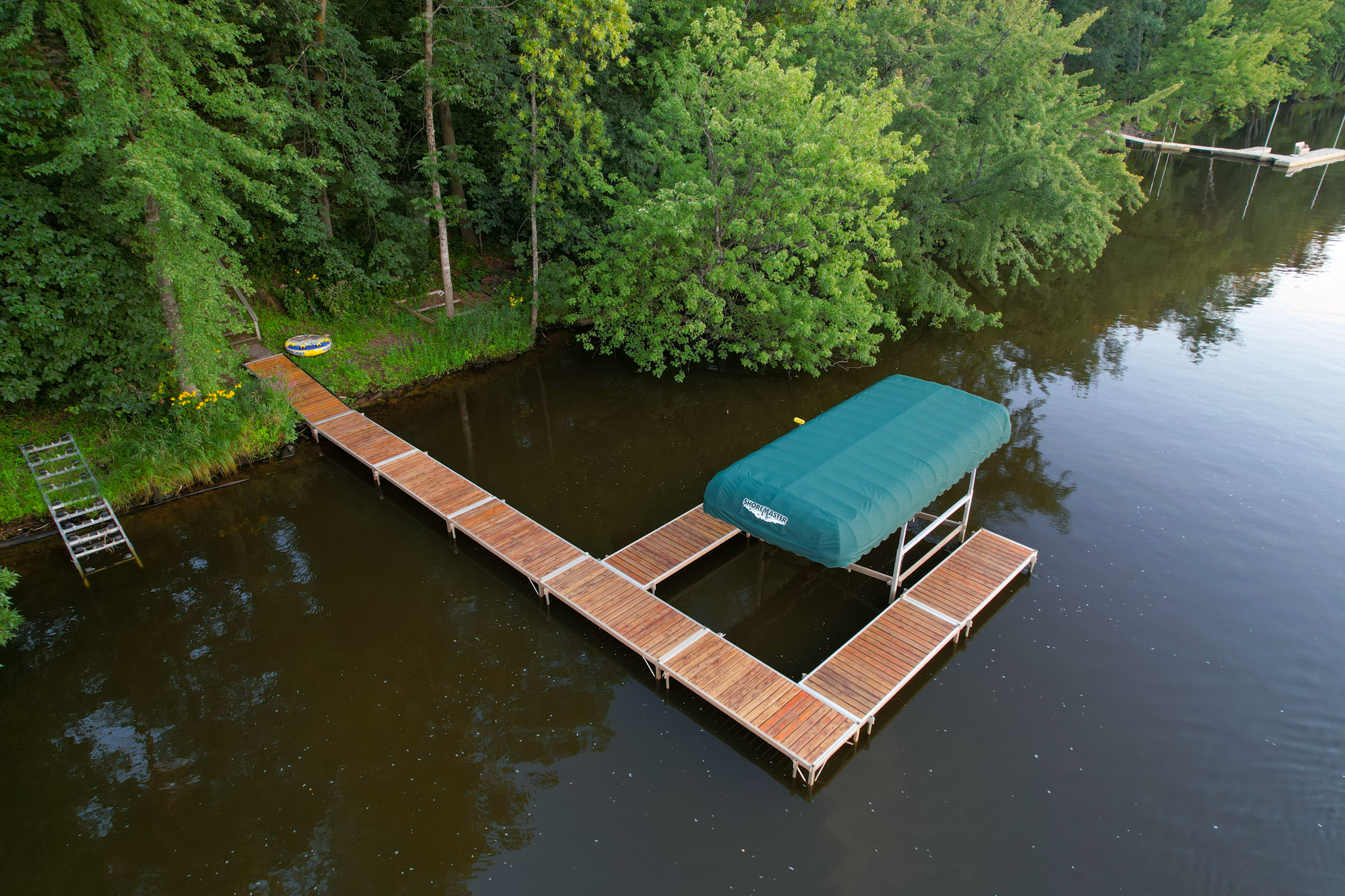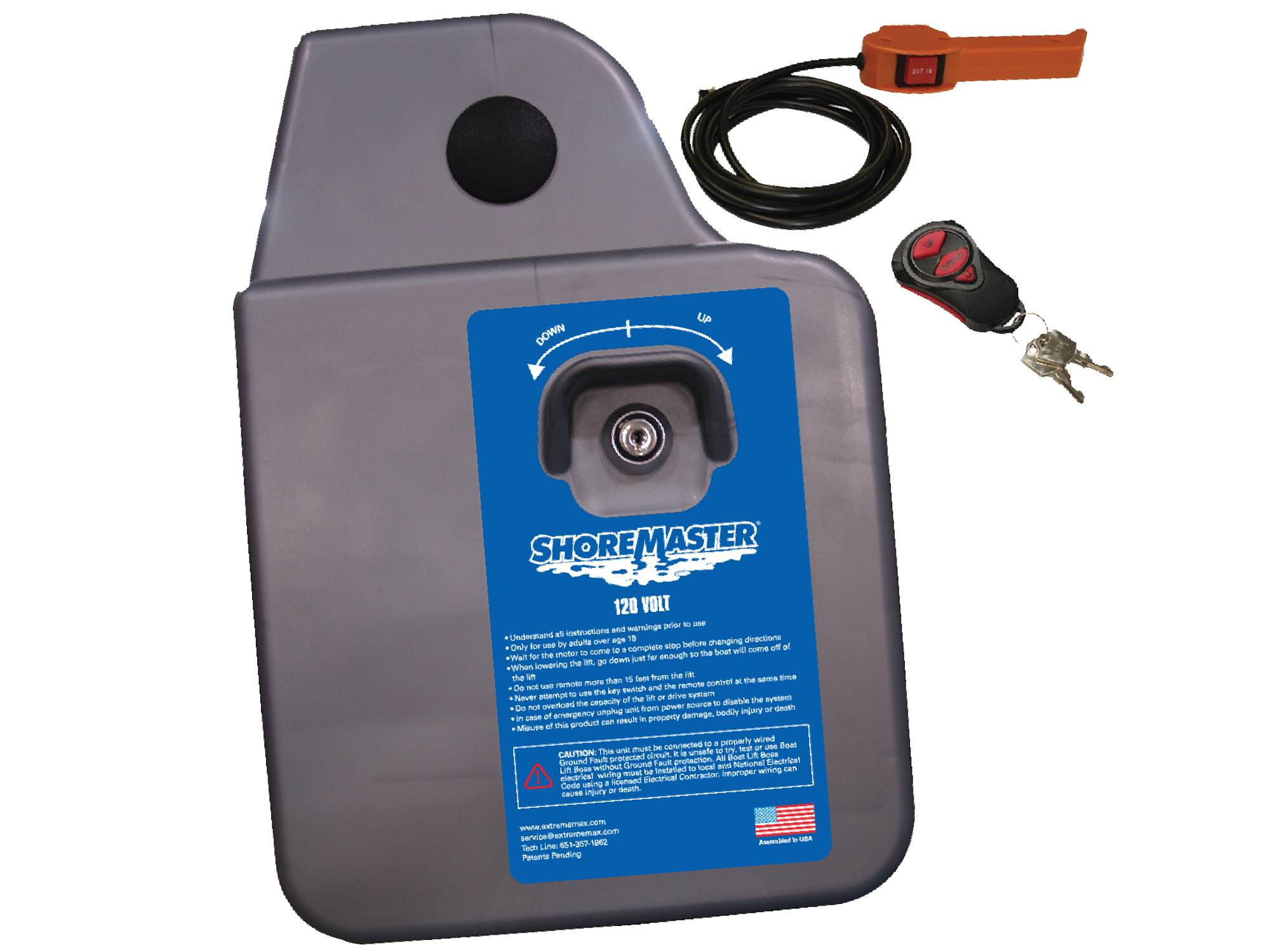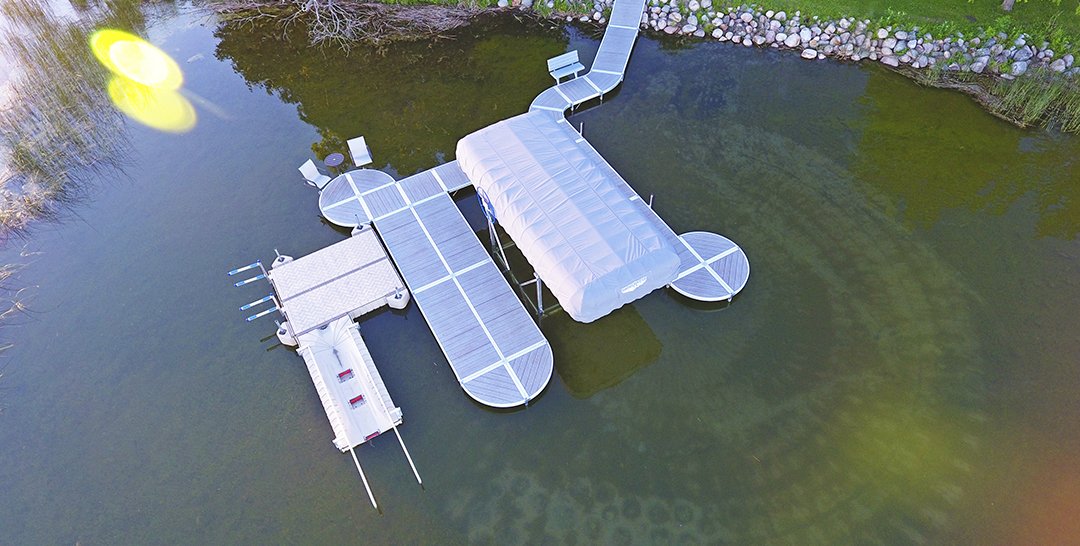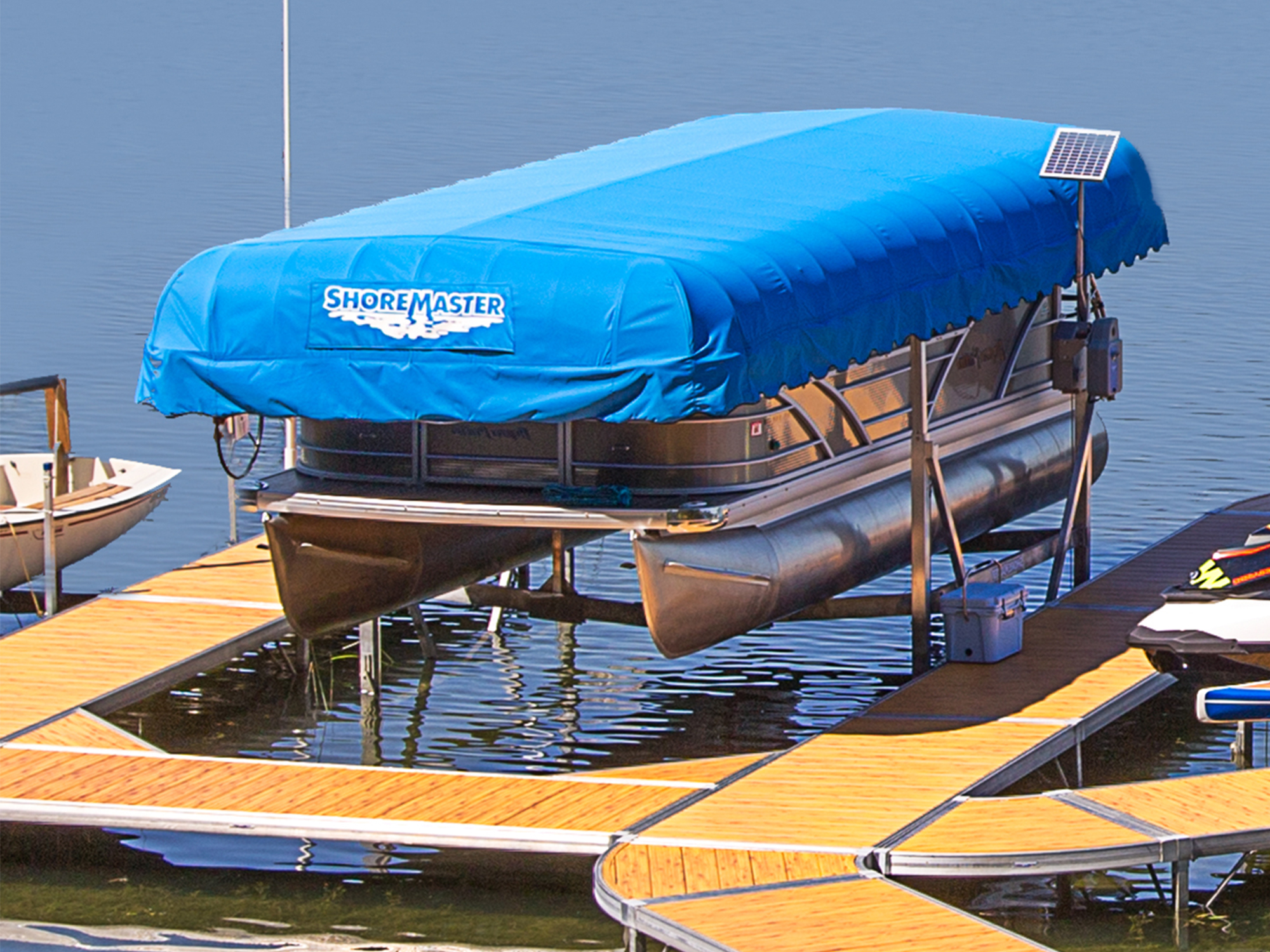March 23, 2023
Floating Boat Docks: All You Need to Know
Written by ShoreMaster Marketing
If you’re in the market for docking solutions, you might have come across floating docks. You might also be wondering how floating dock systems work and why anyone would choose one over a permanent or stationary option. However, floating docks are perfectly safe. After all, we trust our boats to float on the water despite how heavy they are—why wouldn’t we trust a floating dock? It’s a common concern but one we hope to put to rest with a little more information. Read on to learn more about whether a floating dock is right for you.

How Does a Floating Dock Work?
Floating docks consist of a platform supported by air-tight, buoyant pontoons that are anchored in place. These platforms are large enough to displace water, allowing the stock system to float on the water’s surface. If you’re wondering how floating docks work, keep in mind these systems have a series of pipe brackets to allow pipes to slide through and anchor the dock while letting it float up and down, and are often connected to the shore with a gangway. The pontoons that floating docks rest on are made of very sturdy material. They are usually filled with polystyrene or something similar that allows the dock to keep floating, even if the drum is punctured by something. When we say sturdy, that’s just what we mean. ShoreMaster floating dock systems meet or exceed Hunt Absorption Test requirements, the frames are built of lightweight but sturdy aluminum, and the outer shells of the floats are rotationally molded and infused with UV inhibitors to withstand seasons of use.
Floating Dock Benefits
Floating docks are popular for many shorelines, especially for seasonal boaters that need something easy to install and remove when the weather gets colder. This ease of installation and removal also makes it easy to add modules to the system or remove it in rough weather conditions. They’re great for places where stationary docks with legs or piles aren’t—where such a dock will require manual leg adjustments, a floating dock will float up and down with fluctuating water levels. They’re also great for dock and lift set-ups that incorporate electricity because floating on top of the water means the electrical systems are less likely to get submerged. Finally, they look great and have many of the same customization options as stationary docks, especially if you’re getting yours through ShoreMaster.
In addition to the ease of installation, adaptability, and aesthetic appeal, floating docks offer advanced engineering benefits that set them apart from other docking options. As noted by Hasanudin & Yulianto, 'Floating docks possess floodable buoyancy chambers, offering more advantages than other types of ship docking for maintenance.' This unique feature enhances the dock's ability to adapt to varying water levels while providing robust support and maintenance advantages, ensuring your docking solution is not only versatile but also equipped to handle your specific needs efficiently. (Hasanudin & Yulianto, 2018)
Optimal Conditions for a Floating Dock
A floating dock is usually used and works very well in conditions where standing docks don’t. If your water is particularly deep, fluctuates relatively quickly, or has a very soft lake or river bottom, a floating dock is probably a great choice for you. It can also be a good choice if you’re concerned about protecting the lake or river bottom because the anchoring system is minimally invasive compared to permanent or stationary installments with legs or piles that can damage the sediment.
However, a floating dock is best suited for protected, calm areas. Thanks to modern engineering, floating docks are stable enough that you don’t need to worry about one flipping over in the slightest breeze, but you might feel better with something a little more stable to walk on if you’re in a particularly busy or rough area. Floating docks generally shouldn’t be exposed to wind waves that continuously exceed 12-18 inches.
If you’re still unsure if a floating dock is right for you, a local waterfront dealer can help you decide on the best boat dock for your waterfront. ShoreMaster has a very large network of authorized dealers in the United States and Canada that can help you determine which ShoreMaster products and accessories are best based on your watercraft, area, and other waterfront hobbies. To get in touch with a dealer near you, use our online contact form.
Hasanudin, H., & Yulianto, A. (2018). Design and Construction of Spud Housing for Floating Dock. , 159, 02060. https://www.matec-conferences.org/articles/matecconf/abs/2018/18/matecconf_ijcaet-isampe2018_02060/matecconf_ijcaet-isampe2018_02060.html



